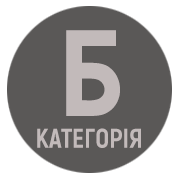Specifiсity of the lexico-phraseological potential of the imaginery of the language of historical figures speeches of T. Livy’s work “History”
DOI:
https://doi.org/10.32782/2617-3921.2021.20.155-168Keywords:
rhetoric, stylistic features, Ancient Rome, Titus Livy, his work “History” (speeches of the work), lexico-phraseological means of argumentationAbstract
Modern linguistics is characterized by an increased interest in the study of the problems of rhetoric, which is most closely intertwined with poetics, stylistics, and logic. A valuable material in this regard is the work of the famous Roman historiographer Titus Livy “History”. The speeches of historical figures that the author introduces into this work are classic examples of oratory. There are many works devoted to the study of the linguistic features of speeches of other decades of the work. The speeches of the first decade remained outside the field of view of researchers. In this context, a comprehensive analysis of the lexical and phraseological means of the imagery of speeches of the first decade from the point of view of their argumentative role is of particular importance; this is the purpose of our study. The study shows that the most common type of phraseological units of speech are phraseological or stable phrases, which, in accordance with their lexical composition, were divided into the following groups: noun – verb; noun – adjective; noun – noun. A bright emotional and expressive coloring is characteristic of the maxims of speeches, phraseological units, as a rule, perform a nominative or expressive function. The article outlines that the sources of imagery formation are metaphorization, and the means of creating images are tropes, which the author skillfully uses for the purpose of argumentation. Metaphors based on the phenomenon of anthropomorphism prevail. T. Livy creates not too erased and not too refined metaphors, but those that would meet the aesthetic tastes of the readers. Metonymy and synecdoche in speeches emphasize the main thing, give the statement a generalized meaning. In the author’s usage there are exaggerated metaphors, epithets, comparisons. In the texts of speeches, we find litoty of two types: tapeynosis and meiosis. The article highlighted epithets and studied them in detail. Quantitatively, epithets that express the external sign of objects or phenomena, as well as those that determine the psychological characteristics of a person or phenomenon, prevail. This allows us to draw a conclusion about the author’s deeply psychological worldview. Research into these and permanent epithets allows a deeper understanding of the author’s intention. It was in the epithets that the idea of “History” and the individuality of the writer were reflected with special force.
References
Аннушкин В.И. Зачем нужна риторика? Русская речь. 1985. № 5. С. 81–86.
Аннушкин В.И. Первая русская «Риторика». Москва, 1989. 63 с.
Античные риторики / под ред. А.А. Тахо-Годи. Москва, 1978. 352 с.
Античные теории языка и стиля. Москва–Ленинград, 1936. 341 с.
Будагов Р.А. Метафора и сравнение в контексте художественного целого. Русская речь. 1973. № 1. С. 26–32.
Вовк В.Н. Языковая метафора в художественной речи: Природа вторич. номинации. Киев, 1986. 142 с.
Заворотна Т.П. Іменні метафоричні словосполучення. Чернівці, 1983. 47 с.
Кузнецова Т.И., Миллер Т.А. Античная эпическая историография: Геродот Тит Ливий. Москва, 1984. 210 с.
Палевская М.Ф. Синонимы в русском языке. Москва, 1964. 128 с.
Потебня А.А. Из записок по теории словесности. Харьков, 1905. 641 с.
Рыбникова М.А. Введение в стилистику. Москва, 1937. 281 с.
Сергеич П. Искусство речи на суде. Москва, 1960. 372 с.
Тахо–Годи А.А. Античные истоки традиционного представления о метафоре. Іноземна філологія. 1966. Вип. 9. С. 133–139.
Тэн И. Тит Ливий. Критическое исследование. Москва, 1900. 398 с.
Цицерон М.Т. Три трактата об ораторском искусстве / пер. с лат.; под ред. М.Л. Гаспарова. Москва, 1972. 471 с.
Черкасова Б.Т. Опыт лингвистической интерпретации тропов (Метафора). Русский язык, 1986. № 2. С. 28–38.
Швед Е.В. Функціонально-стилістичні можливості мовних засобів контрасту у промовах історичних осіб твору Т. Лівія «Історія». Збірник матеріалів Міжнародної наукової конференції, присвяченої пам’яті проф. С.В. Семчинського. Київ: КУ, 2001. Ч. ІІ. С. 569–577.
Bernhardy G. Grundriss der Rőmmischen Literatur. Halle, 1850. S. 542–545.
Bruns J. Die Persőnlichkeit in der Geschichtsschreibung der Alten. Kiel, 1897. 84 s.
Kűhnast L. Die Hauptpunkte der Livianischen Syntax. Berlin, 1871. 402 s.
Stacey S. G. Die Entwicklung des livianischen Stiles. Leipzig, 1896. 661 s.
Titi Livi. Ab urbe condita libri / W. Weissenborn. M. Műller. lib. I–VI. Lipsiae, 1910. 396 s.
Titi Livi. Ab urbe condita libri / W. Weissenborn. Bd. III. Buch. VI–X. Berlin, 1876. 220 s.
Wackernagel W. Poetik, Rhetorik und Stilistik. Halle, 1888. 597 s.



